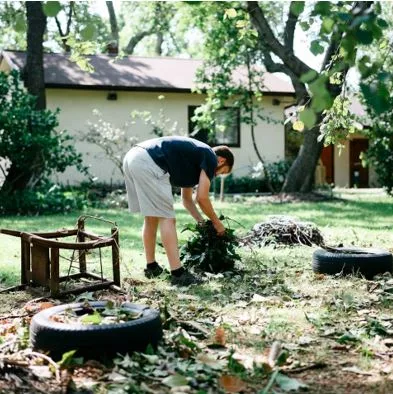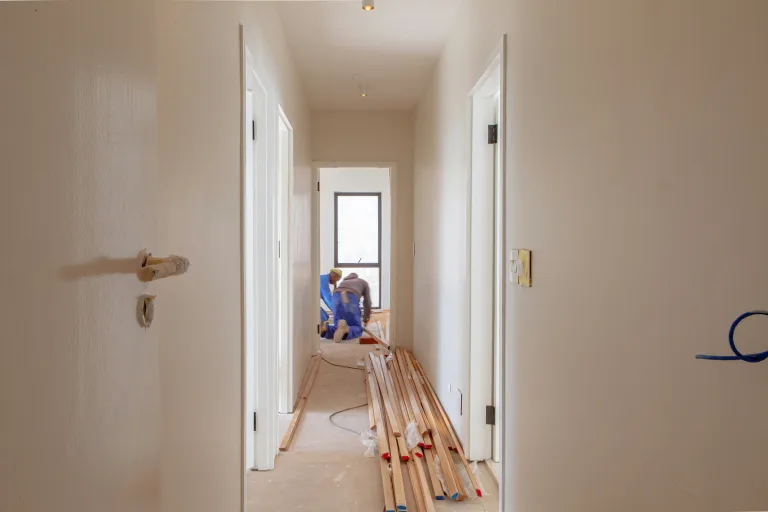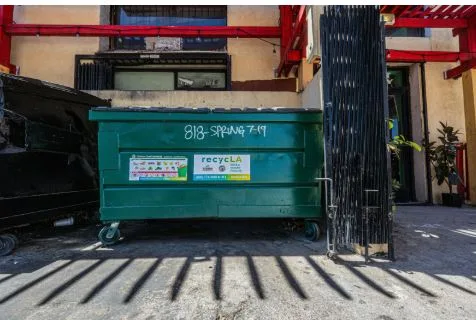How to Keep Your Yard Tidy in 6 Simple Steps
Maintaining a tidy yard is more than a seasonal chore—it enhances your home’s value, promotes a healthy ecosystem, and creates a welcoming outdoor space for family and friends. A clean yard immediately improves curb appeal and prevents pests and safety hazards.
Achieving a neat yard doesn’t require overwhelming, weekend-long projects. With consistent, manageable steps, small issues don’t become big problems. Here’s a simple six-step guide to keeping your yard organized and beautiful, plus tips for turning your green waste into a useful resource.
Step 1: Clear Debris and Fallen Leaves
Start by removing leaves, twigs, weeds, and old plant material. This allows sunlight and water to reach your grass and prevents damp areas where pests and diseases thrive.
Tips for efficient cleanup:
- Use a rake or leaf blower.
- Shred leaves with your mower—they can enrich your soil or garden beds.
If the volume of leaves and green waste is overwhelming, consider a professional Green Waste Removal service. They handle heavy debris responsibly, saving time and effort while keeping your yard eco-friendly.
For smaller amounts, you can compost them yourself—a simple, effective way to enrich your soil. Soft leaves, grass clippings, and green plant cuttings make excellent compost. Check this Compost Ultimate Guide for easy instructions.
Step 2: Proper Pruning for Plant Health
Pruning isn’t just about aesthetics—it’s vital for plant health. Remove dead or diseased branches to prevent disease spread, encourage new growth, and improve appearance.
Key points:
- Dead branches should not be composted if they are diseased; dispose of them responsibly.
- Prune to improve air circulation and sunlight penetration.
- Well-shaped shrubs and trees elevate the overall look of your yard.
Regular pruning keeps your yard looking organized and plants healthier, preparing them for future growth.
Step 3: Organize Your Garden Tools
Cluttered tools make maintenance frustrating. A designated storage space—like a shed or wall-mounted hooks—keeps tools accessible and prolongs their lifespan.
Tips:
- Clean tools after use.
- Store hoses, pruners, and mowers properly to prevent damage.
- Consider simple hacks like a PVC holster on your mower handle for small tools.
Organized tools make yard care more efficient and keep the area visually tidy.
Step 4: Define and Tidy Your Yard’s “Bones”
Your yard’s bones—pathways, borders, and garden beds—form its structure. Clean edges and defined borders immediately make your yard look polished.
How to tidy your yard’s structure:
- Use a manual edger or shovel to create sharp lines around garden beds and walkways.
- Lawn curbs subtly separate lawns from flower beds, protecting plants and easing mowing.
Clear boundaries improve both aesthetics and functionality.
Step 5: Organize Your Plantings
A thoughtful planting layout combines beauty and practicality:
- Group plants with similar sunlight and watering needs.
- Use pots and planters for better control and easier maintenance.
- Arrange plants to allow easy access for mowing and weeding.
An organized planting layout simplifies care and keeps the yard looking neat with minimal effort.
Step 6: Add Finishing Touches
Small touches make a big difference:
- Add simple lighting or decorative elements.
- Use geometric lawn edging to create defined garden beds.
- Arrange planters strategically to keep the space organized and accessible.
These finishing touches make your yard feel complete and intentionally maintained.
Conclusion
A tidy yard is the result of consistent, manageable care, not one-time efforts. By following these six steps—clearing debris, pruning, organizing tools, defining your yard’s bones, arranging plants, and adding finishing touches—you can create a welcoming and healthy outdoor space.
Finish by handling green waste responsibly: compost small amounts yourself or rely on professional Green Waste Removal for larger jobs. With these strategies, your yard can remain beautiful, functional, and environmentally friendly all year round.







